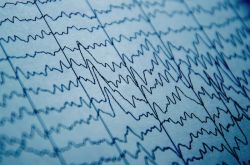Beta waves represent the rhythm of alert focus, analytical thinking, and effectiveness. When we concentrate on a task, solve problems, or engage with the outside world, beta waves are dominant. While they are key to performance, excessive beta activity can lead to inner tension, restlessness, and anxiety.
What are beta waves?
Beta frequency ranges from 13 to 30 Hz and appears during mental activity such as reading, conversation, planning, or decision-making.
Higher beta waves (above 20 Hz) are often associated with stress and anxiety, while lower ranges support focused alertness and cognitive flow.
Beta activity arises mainly in the frontal and parietal lobes, brain areas responsible for executive functioning, cognitive control, and attention regulation.
When beta is balanced - and when it dominates
When balanced, beta supports a sharp intellect, quick responses, and the ability to engage with the world.
It is the wave of the active mind - ready, organized, and goal-oriented.
But when beta dominates, the mind produces an excess of cognitive loops, compulsive thoughts, and “what if…” scenarios.
This often leads to mental overload, anxiety, and irritability.
In neurodivergent individuals (e.g., ADHD or autism), beta activity can be either overstimulated or underactive, resulting in challenges with focus, impulse control, or sensory overwhelm.
How to support healthy beta rhythms
- Structured daily rhythm - clear separation between active and resting phases
- Deep breathing and HRV biofeedback
- Aromatherapy with focusing oils (rosemary, peppermint, lemon, basil)
- Embodied practices (conscious movement, yoga, tai chi) to reduce tension
- Light and sound stimulation in beta frequencies (e.g., 15-18 Hz for balance)
- Mindfulness training to increase awareness without overload
At Light Brains, we work with beta as the energy of attention, which can be consciously tuned.
We use light and sound cues in SMR/beta frequencies, targeted aromatherapy, and movement-based integration.
For clients with overactive beta, we begin with grounding breath and bodywork, creating space for calm focus.
Where beta is underactive, we use multisensory stimulation to awaken cognitive engagement.
Sources and Further Reading
- Hammond, D. C. (2005). Neurofeedback Treatment of Depression and Anxiety. → Shows how anxiety is linked to heightened beta activity and how it can be regulated.
- Egner, T., & Gruzelier, J. H. (2004). EEG biofeedback of low beta band components. → Demonstrates the use of beta rhythms in neurofeedback for attention and performance enhancement.
- Putman, P. (2011). Resting state EEG delta–beta coherence in relation to anxiety and attentional processing. → Links elevated beta activity with hypervigilance and anxiety traits.
- Lubar, J. F. (1997). Neocortical dynamics: understanding the role of beta activity in attention. → Describes the role of beta in executive function and mental organization.
- Vernon, D. et al. (2003). Neurofeedback as a treatment for ADHD. → Highlights beta training as supportive therapy for both children and adults with ADHD.





